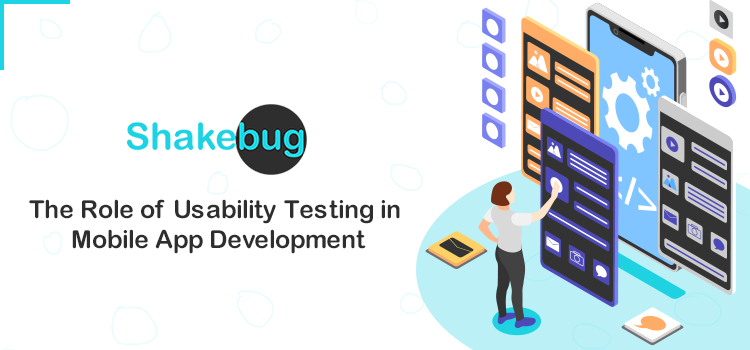When it comes to developing a successful mobile app, the user experience is key. This means that testing strtegies should be an integral part of the app design process, especially usability testing.
Usability testing is the practice of evaluating how easy it is for users to interact with an application. By testing the usability of an app, developers can identify and fix any problems that could be hindering the user experience which helps them for optimizing app performance.
Usability testing is a crucial aspect of mobile app development that involves evaluating the ease and effectiveness of using an application. Through usability testing, developers can identify potential user difficulties and make necessary adjustments to enhance the overall user experience. This type of testing can be conducted in various ways, including task-based testing, A/B testing, and cognitive walkthroughs.
By focusing on usability during the development process, designers can ensure that their apps are intuitive and functional for users across different devices and platforms. Overall, usability testing plays a vital role in creating successful mobile applications that meet user needs while also driving business growth.
Benefits of Usability Testing in Mobile App Development
Mobile app development has consistently relied on usability testing as a vital component as it ensures the success and popularity of a product. It helps developers identify any potential issues or problems with the app’s design, functionality, and user interface. It also helps to improve user satisfaction and engagement, enhance brand reputation and customer loyalty and help to higher conversion rates and retention.
By conducting usability tests, they can also gather valuable feedback from real users to improve the overall experience. This way, usability testing can prevent negative reviews and low ratings on app stores due to poor user experience.
Moreover, it saves time and resources by identifying flaws early in the development process before launching the final product. Overall, incorporating usability testing into mobile app development can greatly enhance its quality and increase its chances of success among target audiences.
Key Components of Usability Testing
The significance of usability testing in mobile app development has remained constant because it ensures that the user interface (UI) design evaluation, navigation and flow assessment, interaction and feedback analysis, accessibility and inclusivity testing, as well as performance and response time measurement.
The UI design must be easy to navigate for a seamless user experience. Navigation should be intuitive, with clear calls to action for users to follow. Interaction and feedback analysis allows developers to tweak their designs based on how users engage with the app.
Accessibility and inclusivity testing ensure that everyone can use the app regardless of any disabilities they may have. Finally, performance and response time measurement help developers identify areas where speed improvements are necessary so that the app runs smoothly without frustrating users.
Usability Testing Methods and Techniques
Usability testing has maintained its pivotal role throughout mobile app development.
Moderated usability testing involves an expert moderator who guides the user through specific tasks, while unmoderated usability testing allows users to complete tasks without any guidance.
Heuristic evaluation is used to identify potential problems and improve the overall design of the app. A/B testing helps developers compare two versions of an app and determine which one performs better.
Eye tracking technology can be used to understand how users interact with different elements on the screen, while heat maps provide insight into where users focus their attention.
All these techniques help ensure that mobile apps are intuitive, easy to use, and engaging for end-users.
Incorporating Usability Testing into the Development Process
Usability testing during the design phase is crucial in ensuring that mobile apps are user-friendly and efficient. Iterative testing and continuous improvement allow developers to identify and fix usability issues early on, resulting in a better overall user experience.
Collaboration between developers, designers, and testers is key to creating a cohesive app that meets users’ needs. Incorporating user feedback and suggestions throughout the development process leads to more successful outcomes.
Usability Testing Tools and Technologies
In the realm of mobile app development, usability testing has always been indispensable, as it helps to ensure that the user experience is optimized. By using usability testing tools and technologies, developers can test their apps for ease of use, accessibility, responsiveness, compatibility with different devices and operating systems, etc.
This allows them to identify any issues or areas where improvements need to be made before releasing the app into production. With proper usability testing in place during the development process, businesses can create better-performing apps that are more likely to succeed in today’s competitive market.
Best Practices for Usability Testing in Mobile App Development
Mobile app development has consistently recognized the essential nature of usability testing. It helps developers identify potential user experience issues before they launch an app, which can save time and money down the line. Best practices for usability testing include recruiting representative users, creating realistic scenarios, and using both qualitative and quantitative data to evaluate an app’s ease of use.
Developers should also consider conducting iterative rounds of testing throughout the design process to refine their approach based on user feedback. Ultimately, investing time ineffective usability testing can help ensure that your mobile app delivers a seamless experience that keeps users engaged and satisfied over time.
Challenges and Limitations of Usability Testing
When it comes to mobile app development, usability testing plays a critical role in ensuring that the final product meets users’ needs. However, there are many challenges and limitations to this process.
One major challenge is finding representative test participants who can provide valuable feedback on the app’s usability and functionality. Additionally, conducting tests in real-world situations can be difficult as factors such as network connectivity and device compatibility can impact user experience.
Another limitation is that usability testing only provides insights into how users interact with an app at a given point in time, rather than predicting long-term usage patterns or adoption rates. Despite these challenges and limitations, usability testing remains essential for developing high-quality mobile apps that meet users’ expectations and drive engagement over time.
Testing across multiple device platforms and screen sizes is necessary to ensure that the app functions seamlessly on all devices. Balancing user preferences and business requirements can be challenging but it is important to keep both in mind during the mobile app development process. Ethical considerations such as user data privacy must also be taken into account during usability testing to protect users’ personal information.
Despite these challenges and limitations, usability testing remains essential for developing high-quality mobile apps that meet users’ expectations and drive engagement over time.
Overall, usability testing helps developers create mobile apps that are not only functional but also provide a positive user experience.
Case Studies: Successful Implementation of Usability Testing
Usability testing plays a crucial role in mobile app development by ensuring that the final product is user-friendly and meets the needs of its target audience. Through successful implementation of usability testing, developers can identify potential issues early on and make necessary improvements before launching their app.
In one case study, a banking app underwent extensive usability testing which led to significant changes in the navigation menu and user interface design. As a result, users were able to complete tasks more efficiently and reported greater satisfaction with their experience.
Another case study focused on an e-commerce app which saw increased conversions after implementing changes based on feedback from usability testing sessions. These success stories demonstrate the importance of including usability testing as a key component in mobile app development processes.
The Future of Usability Testing in Mobile App Development
Usability testing has always played a crucial role in mobile app development, ensuring that apps are user-friendly and meet the needs of their intended audience. However, with the rapid pace of technological advances and increasing competition among app developers, usability testing is set to take on an even more important role in shaping the future of mobile app development.
From AI-powered testing tools to sophisticated user analytics, developers will have access to a range of innovative techniques for understanding how users interact with their apps and identifying areas for improvement. By embracing these new approaches, app developers can create products that truly meet the needs and expectations of their users while staying ahead of the curve in an increasingly crowded marketplace.
Conclusion
In mobile app development, usability testing plays a crucial role in ensuring that the end product meets the needs and expectations of users. By conducting various tests throughout the development process, developers can identify potential issues and make necessary changes before releasing the app to the public.
Usability testing also helps to improve user engagement by providing insights into how users interact with the app and what features they find most useful or frustrating. In short, usability testing is an integral part of creating a successful mobile app that delivers an exceptional user experience.


